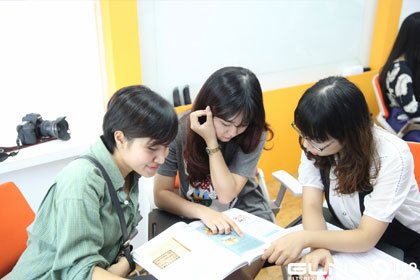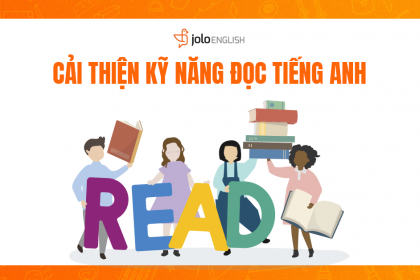
Trong chủ đề lần này, JOLO English sẽ cùng bạn luyện tập các câu hỏi liên quan đến chủ đề của phần thi IELTS Speaking part 2 (đồ chơi thời thơ ấu). Dưới đây bạn sẽ tìm được một số câu trả lời mẫu cho chủ đề này,những câu trả lời sẽ hỗ trợ cho bạn trong việc tìm ý tưởng và từ mới trong bài thi.
LƯU Ý: Bạn chỉ nên đọc, tham khảo và không nên học thuộc câu trả lời mẫu. Điều này có thể sẽ khiến bạn bị mất điểm trong bài thi Speaking IELTS. (Tìm hiểu thêm những sai lầm cần tránh trong bài thi SPEAKING tại đây)
Trong bài viết này bạn sẽ tìm được:
- Câu hỏi và câu trả lời mẫu.
- Các từ mới hữu ích và cách phát âm.
- Các mẹo cho phần thi nói part 3.
Question & Models Ansewrs : Toys
- What should be considered when buying toys for children? (Những gì cần lưu ý khi mua đồ chơi cho trẻ em?)
I reckon one important thing to think about is the age of the child. If a child is only a couple of years old, you shouldn’t give them toys which contain small parts that could be swallowed and cause the child to choke. Another thing to consider is whether the toy will continue to entertain the child for a certain period of time. What I mean is, if the toy will only interest a child for 5 minutes, it isn’t really worth buying. It’s better to choose something that they will enjoy for months or years.
- How have toys changed compared to the past? (Đồ chơi đã thay đổi như thế nào so với quá khứ?)
I guess the main change is in electronic toys or battery operated toys. In the past, people used to only give simple toys to their children that were often handmade. Nowadays, people prefer mass produced toys that are the recent trend. Those types of toys are often exciting electronic toys, such as computer games. Another difference is that toys decades ago were often so simple that children had to use their imagination and creativity to find enjoyment in using them. I think today’s toys stimulate less creativity in children on the whole. - Why do parents buy a lot of toys for their children? (Tại sao ba mẹ mua nhiều đồ chơi cho con?)
I guess some parents are materialistic. They think that if they buy many toys for their kids, they are being a good parent. Another reason is that children have short attention spans which means that some parents buy toys to keep their child quiet and out of their way. But I think the main reason is probably the power of advertising and peer pressure which drive children to want more toys and pushes parents to buy them. - Is it good for children to play with toys? (Đồ chơi có tốt cho trẻ em không?)
Yes, I think so. Some toys that can be bought are educational and are very important for early learning. Educational toys provide a great way for children to develop skills, such as spatial awareness, motor skills and hand-eye coordination. Furthermore, toys can give children a safe way to explore the world and learn about colours, shapes and textures. However, I must admit that some toys for older children, such as computer games, can become addictive and, at that point, those types of toys are not beneficial.
Useful Vocabulary & Pronunciation
Tìm hiểu các từ hữu ích cho chủ đề đồ chơi :
- Creativity: Sáng tạo
- Imagination: Trí tưởng tượng
- Motor skills: Kỹ năng vận động
- Social skills: Kỹ năng xã hội
- Spatial awareness: Nhận thức không gian
- Choke on small parts: Lắp ráp các bộ phận
- Battery operated toys: Pin hoạt động đồ chơi
- Recharging batteries: Sạc pin
- Computer games: Trò chơi vi tính
- Wooden toys: Đồ chơi bằng gỗ
- Dolls: Búp bê
- Rules of the game: Quy tắc trò chơi
- Hand-made toys / Mass produced toys: Đồ chơi tự làm
- Materialism: Chủ nghĩ vật chất
- Consumerism: Chủ nhĩa tiêu thụ
- To keep someone quiet: Giữ cho ai đó yên tặng
- To keep someone entertained: giữ cho ai đó giải trí
- to keep someone out of the way: giữ người khác tránh khỏi việc của mình
- Board games, chess: Trò chơi trên bàn, cờ
- Educational toys: Trò chơi giáo dục
- Become addictive: Trở nên gây nghiện
IEILTS SPEAKING PART 3 TIPS
- Độ dài câu trả lời (Length of answer)
Tiếp tục nói cho tới khi người chấm thi cắt lời bạn. Người chấm thi sẽ quyết định thời gian đổi trọng tâm câu hỏi và câu trả lời và thay đổi một câu hỏi mới hoàn toàn. Câu trả lời của thi nói part 3 sẽ dài hơn part 1.
- Nội dung (Content)
Giải thích ý tưởng và quan điểm của bạn bằng cách đưa ra ví dụ. Bạn cần thể hiên khả năng giải quyết ý tưởng phức tạp bằng tiếng Anh.
- Tránh nói về bản thân (Avoid taking about yourself)
Phần 1 và 2 nói về bản thân bạn. Tuy nhiên, câu hỏi trong phần 3 chủ yếu là những về vấn đề thế giới. Bạn cần thể hiện cho người chấm thi thấy rằng bạn có thể nói nhiều hơn về chính bạn. Bạn cần thể hiện khả năng nói về con người và thế giới nói chung của mình.
- Thử thách ý tưởng ( challenging ideas)
Người chấm thi có thể thử thách các ý tưởng của bạn. Đây là một cách để giám khảo kiểm tra khả năng tiếng anh của bạn và kiểm tra rằng bạn có đủ khả năng để bảo vệ quan điểm của bạn hay không.
Để tìm hiểu thêm các kinh nghiệm hay và những tips độc đáo để đạt điểm cao trong phần thi SPEAKING IELTS, bạn có thể khám phá tại mục BÍ QUYẾT HỌC IELTS của JOLO ENGLISH nhé





















